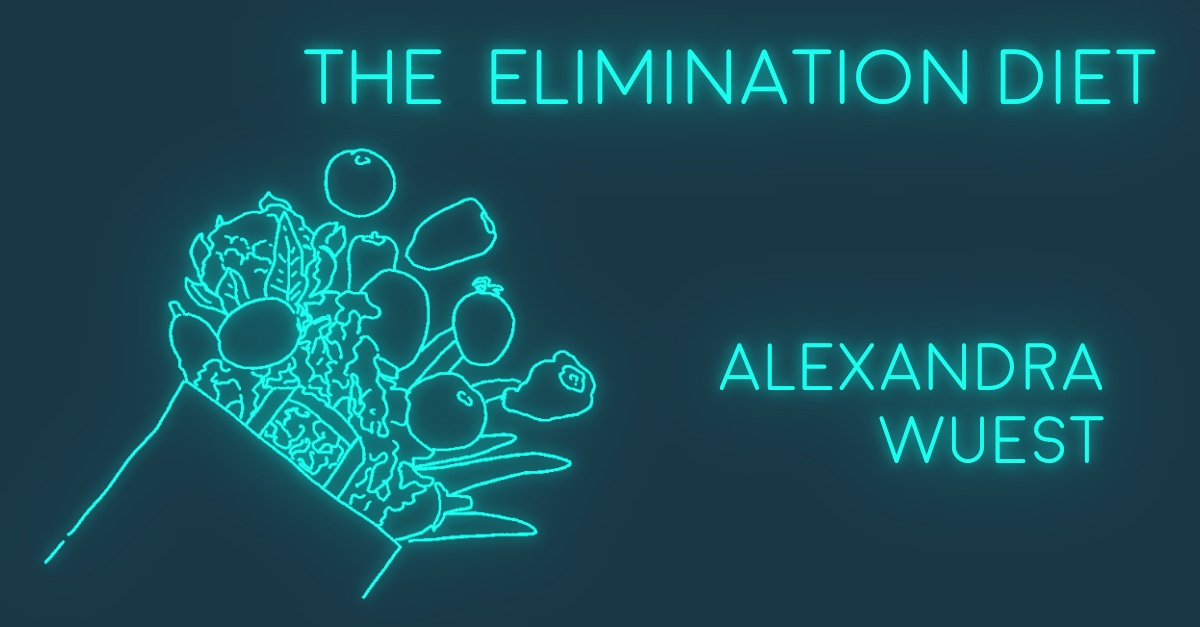Diane learns about the diet in a magazine. The article says those on the diet see extraordinary results and features photos labeled BEFORE and AFTER. The article says to start slowly: cutting out red meat, dairy, and refined sugar. Diane tosses soup cans, throws away all the condiments, and cleanses the kitchen of corn syrup. The next week, more foods are eliminated. Diane rids the house of nightshade vegetables, artificial flavors, and late-night TV. She tells everyone who will listen about her new diet. She tells the priest during confession. She tells the little girls outside the bank selling lemonade. She tells her son’s math teacher during a parent-teacher conference. She makes a stir-fry out of school supplies. She paints rocks to look like chicken cutlets. She presses wet sand into a round tin and enters it in the county fair pie contest. She gives up toasted foods; granola; the microwave. She gives up tin foil, baths, and sour dough bread, pop music and fettuccine too. She tells her sisters about the new diet. Her older sister Kathleen is on the clams casino diet. Her younger sister Nina is on the tap dance diet. Each sister thinks the others are crazy for eating the way they do and each sister says so. Diane gives up her landline next and stops answering her sisters’ emails. In another magazine she reads an interview with a celebrity who is on the same diet she is. I’ve never felt better, the celebrity says, and Diane imagines being asked the same questions someday in a public forum. How do you do it? the interviewer will ask, and Diane will say, I’ve always been very disciplined, and then Diane gives up magazines. Diane gives up learning new languages and baked Alaska. She gives up the Grand Canyon and carbonated beverages. She sits in a diner under lighting the color of melted butter and studies a laminated menu the size of a bible. There’s nothing I can eat here, she complains, and then she gives up restaurants, eating out, and the color yellow. She gives up Christmas and Halloween, Valentine’s Day too. She cuts out Mondays and Tuesdays; gives up leap years and the month of December. She gives up denim, linen, cotton, satin, and polyester. She buys surplus silk and cuts it into the shape of what she imagines her body might look like, but she doesn’t know anymore because she’s already given up measuring tapes and mirrors, all reflective surfaces too. She gives up glassware and replaces all her cups with breakaway props from a movie set. She gives up gears and hinges, and removes all the clocks and doors from the house. She sews bells onto all of her clothes because she’s given up silence. She draws freckles on her face like constellations because she’s given up looking at the sky. She makes salad out of four-leaf clovers because she’s given up bad luck. She gives up the rain, so she moves to the desert. She gives up her sisters next. Then her mother and nieces and nephews, her son too. The dog, the cat, the birds that sing outside her window every morning. She gives up her body but keeps her shadow. Like the article said, the results are extraordinary. She’s longest in the early morning and evening. She is very short at noon.
Alexandra Wuest is a writer based in New York. Her fiction has appeared in or is forthcoming from Electric Literature's Recommended Reading, Joyland, and Peach Mag.
Art by Bob Schofield @anothertower

